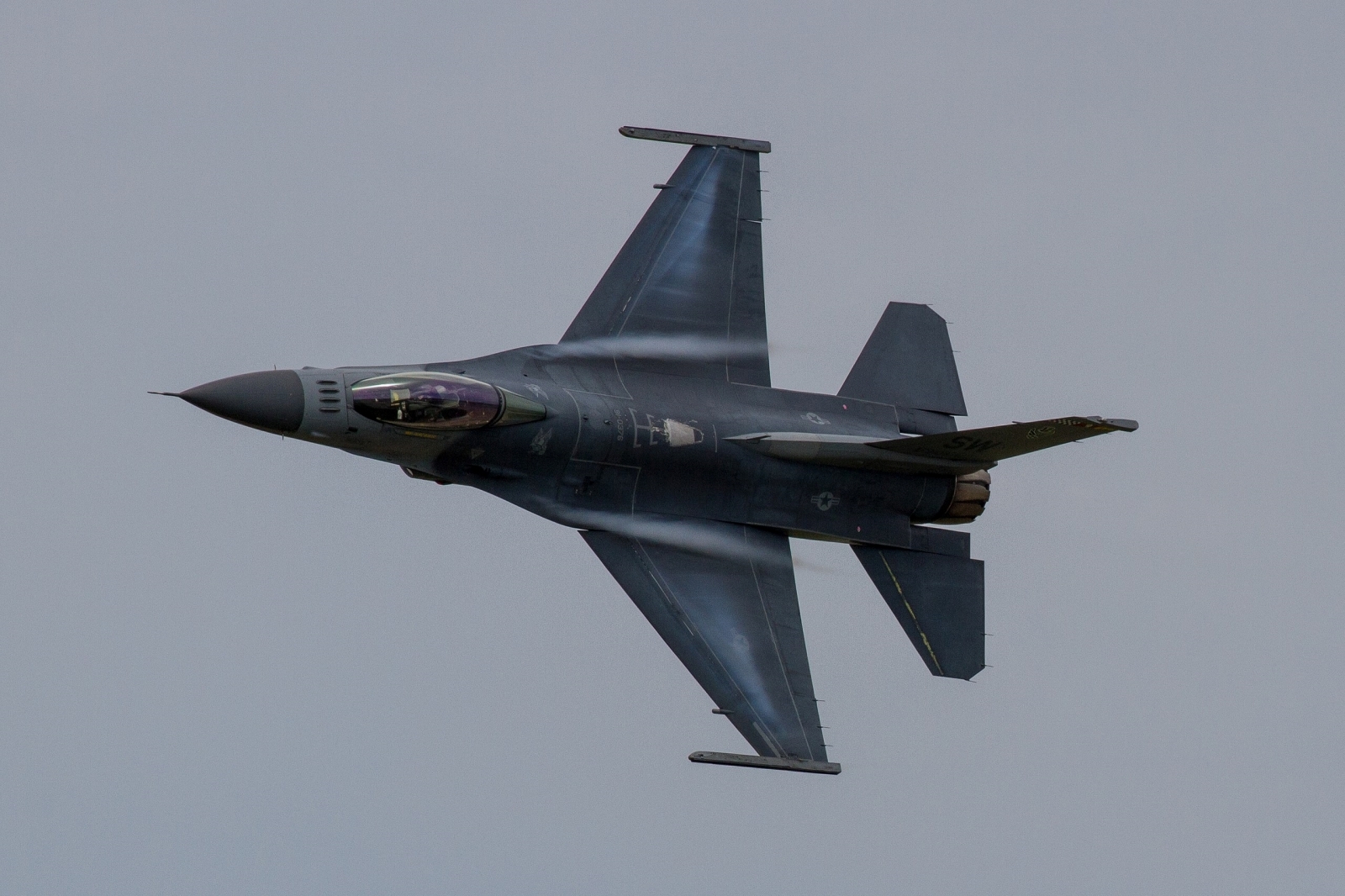 |
|
The escalating conflict between Russia and Ukraine has taken another concerning turn, with reports emerging of a Ukrainian F-16 fighter jet being shot down amidst what is being described as Russia's 'largest' aerial attack against Ukraine. The downing of the F-16, along with its pilot, Lt-Col Maksym Ustimenko, represents a significant loss for the Ukrainian Air Force and raises serious questions about the ongoing effectiveness of Western-supplied aircraft in the face of Russia's advanced air defense systems. This incident also prompted NATO to scramble its warplanes, highlighting the growing tensions in the region and the potential for the conflict to spill over into neighboring countries.
According to reports, Lt-Col Ustimenko was actively engaged in shooting down air targets when his aircraft was hit and began to lose altitude. Despite managing to take down seven enemy targets, his F-16 was ultimately overcome. This incident underscores the intense aerial combat taking place over Ukraine and the inherent risks faced by pilots on both sides of the conflict. The use of F-16s by Ukraine is a relatively recent development, and these aircraft are seen as crucial for bolstering Ukraine's air defense capabilities against Russian attacks. The loss of three F-16s, as reported by Reuters, raises concerns about their vulnerability and the need for improved countermeasures.
In response to the Russian aerial assault, which reportedly involved a staggering 537 aerial weapons, including missiles and drones, NATO has taken the precautionary measure of scrambling its warplanes. Poland's operational command confirmed that Polish and allied aviation had begun operating in their airspace due to the Russian attacks on Ukrainian territory. This move is intended to ensure the safety of areas bordering Ukraine and to deter any potential Russian aggression towards NATO member states. The activation of available forces, including fighter pairs and ground-based air defense systems, demonstrates NATO's commitment to maintaining a high state of readiness and responding swiftly to any threats.
The sheer scale of Russia's aerial attack is alarming, with Ukraine's air force reporting that 477 drones and decoys, along with 60 missiles, were used in the assault. While Ukrainian forces claim to have shot down 249 of these aerial weapons, a significant number, 226, were reportedly lost, possibly due to electronic jamming. This highlights the sophistication of Russia's electronic warfare capabilities and the challenges faced by Ukraine in countering these technologies. The high volume of drones and decoys also suggests a strategy aimed at overwhelming Ukrainian air defenses and creating opportunities for missiles to penetrate.
The incident underscores the complex and dangerous dynamics of the ongoing conflict. The use of advanced weaponry, the high stakes involved, and the potential for escalation all contribute to a volatile situation. The involvement of NATO, albeit in a defensive capacity, further amplifies the risks and highlights the importance of de-escalation and diplomatic efforts to find a peaceful resolution to the conflict. The international community must continue to exert pressure on both sides to engage in meaningful negotiations and to avoid actions that could further escalate the situation.
The reports regarding the downing of the F-16 and the scrambling of NATO jets need to be approached with caution, as information in conflict zones can often be unreliable or subject to propaganda. Verifying the accuracy of these reports is crucial, and it is important to rely on credible sources and to avoid spreading misinformation. However, even with these caveats, the incident serves as a stark reminder of the human cost of the conflict and the urgent need for a lasting peace.
The implications of the downing of the F-16 extend beyond the immediate loss of an aircraft and a pilot. It raises questions about the effectiveness of Western military aid to Ukraine and the ability of Ukrainian forces to withstand the Russian onslaught. It also has implications for NATO's strategy in the region and its willingness to provide further support to Ukraine. The incident could potentially lead to increased pressure on Western governments to provide more advanced weapons and training to Ukraine, but it could also lead to calls for greater restraint and a renewed focus on diplomatic solutions.
The geopolitical ramifications of the conflict are also significant. The conflict has already strained relations between Russia and the West, and the downing of the F-16 could further exacerbate these tensions. The potential for a wider conflict involving NATO is a major concern, and all parties involved must exercise caution to avoid actions that could escalate the situation. The international community has a responsibility to work towards a peaceful resolution to the conflict and to prevent it from spiraling out of control.
The incident also highlights the growing importance of air defense systems in modern warfare. The ability to effectively counter aerial threats is crucial for protecting civilian populations and military assets. The development and deployment of advanced air defense systems are therefore a key priority for both Russia and Ukraine, as well as for other countries around the world. The use of drones and decoys in the Russian aerial attack also underscores the changing nature of warfare and the need for innovative strategies to counter these new threats.
In conclusion, the reported downing of a Ukrainian F-16 and the subsequent scrambling of NATO jets represent a dangerous escalation of the conflict in Ukraine. The incident underscores the human cost of the war, the challenges faced by Ukrainian forces, and the potential for a wider conflict involving NATO. The international community must prioritize de-escalation and diplomatic efforts to find a peaceful resolution to the conflict and to prevent further bloodshed and destruction. The need for accurate information and responsible reporting is paramount in these volatile times, and it is crucial to avoid spreading misinformation or inflammatory rhetoric. The long-term consequences of the conflict are uncertain, but it is clear that the situation demands urgent attention and a concerted effort to find a path towards peace.
Source: Russia shoots down Ukraine’s F-16, pilot in ‘largest’ airstrikes; NATO scrambling jets
